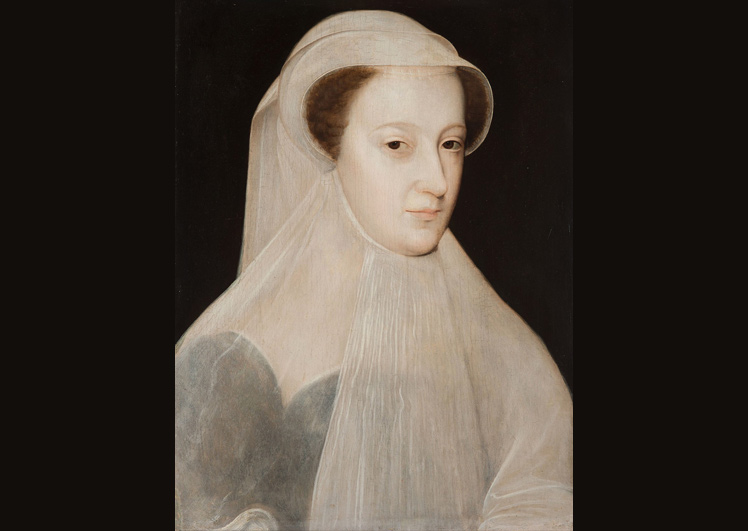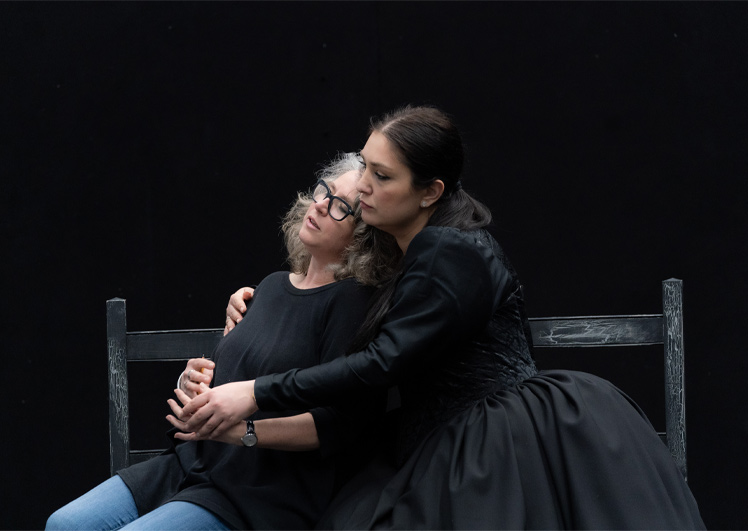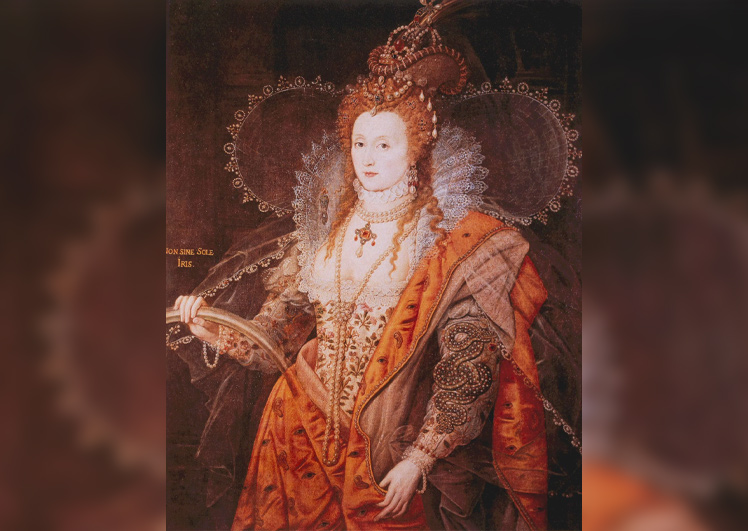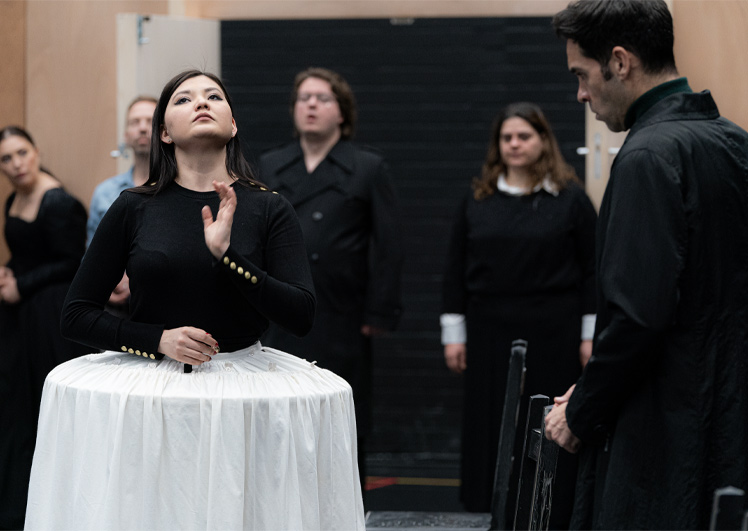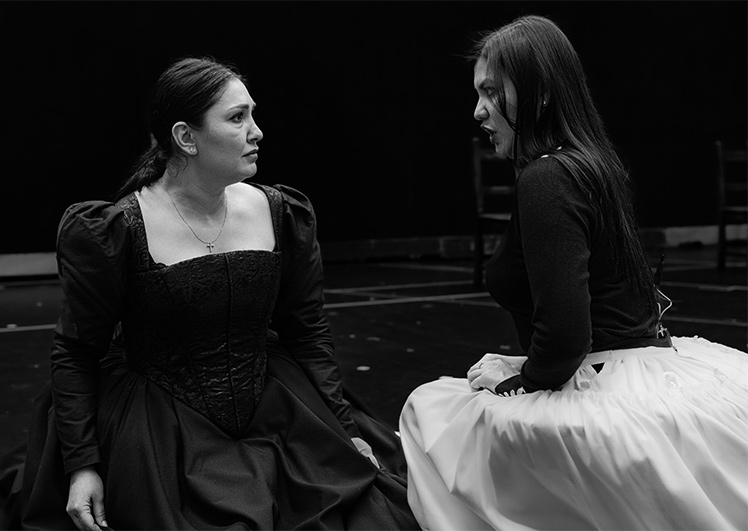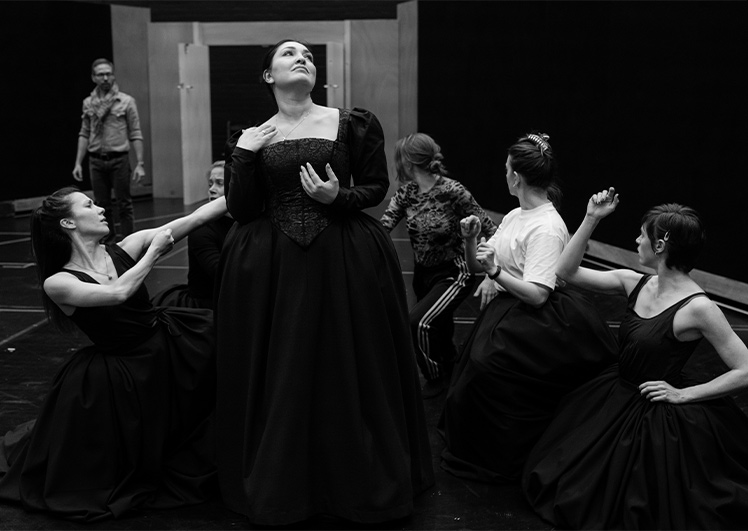Maria Stuarda
Gaetano Donizetti (1797-1848)
Duration
2 hours and 55 minutes, including one interval
The performance is sung in Italian.
There are English and Dutch surtitles.
Tragic opera in two acts
Makers
Libretto
Giuseppe Bardari
Musical direction
Enrique Mazzola
Stage direction
Jetske Mijnssen
Set design
Ben Baur
Costume design
Klaus Bruns
Lighting design
Cor van den Brink
Choreography
Lillian Stillwell
Dramaturgy
Luc Joosten
Cast
Maria Stuarda
Kristina Mkhitaryan
Elisabetta
Aigul Akhmetshina
Leicester
Ismael Jordi
Anna Kennedy
Sílvia Sequeira*
Giorgio Talbot
Aleksei Kulagin
Lord Guglielmo Cecil
Simon Mechlinski
* Dutch National Opera Studio
Netherlands Chamber Orchestra
Chorus of Dutch National Opera
Chorus master
Edward Ananian-Cooper
Co-production with
Palau de les Arts Reina Sofia (Valencia) & Teatro di San Carlo (Napels)
Production team
Assistant conductor
Elda Laro
Assistant directors
Jean-François Kessler
Noah van Renswoude
Assistant chorus master
Ad Broeksteeg
Assistant set design
Felicia Riegel
Repetiteur
Peter Lockwood
Alessandro Amoretti
Daniel Ruiz de Cenzano Caballero
Repetiteur (intern)
Raphael Amoretti
Language coach soloists
Alessandro Amoretti
Language coach chorus
Hilde Cortese
Stage management
Merel Francissen
Emma Eberlijn
Pieter Heebink
Sanne van de Vooren
Master carpenter
Jeroen Jaspers
Lighting manager
Peter van der Sluis
Props master
Niko Groot
Sound engineer
Florian Jankowski
First make-up artist
Pim van der Wielen
Costume supervisor
Lars Willhausen
First dresser
Sandra Bloos
Children supervisor
Manon Wittebol
Artistic planner
Vere van Opstal
Dramaturgy
Naomi Teekens
Surtitle director
Eveline Karssen
Surtitle operator
Irina Trajkovska
Production manager
Nicky Cammaert
Set supervisor
Sieger Kotterer
Orchestra representative
Jurrien Loman
Chorus of Dutch National Opera
Sopranos
Esther Adelaar
Lisette Bolle
Bernadette Bouthoorn
Jeanneke van Buul
Caroline Cartens
Kitty de Geus
Melanie Greve
Oleksandra Lenyshyn
Simone van Lieshout
Tomoko Makuuchi
Sara Moreira Marques
Elizabeth Poz
Janine Scheepers
Altos
Irmgard von Asmuth
Elsa Barthas
Anneleen Bijnen
Daniëlla Buijck
Rut Codina Palacio
Johanna Dur
Yvonne Kok
Fang Fang Kong
Maria Kowan
Myra Kroese
Itzel Medecigo
Sophia Patsi
Marieke Reuten
Klarijn Verkaart
Tenors
Thomas de Bruijn
Wim-Jan van Deuveren
Frank Engel
Milan Faas
Ruud Fiselier
Livio Gabrielli
Robert Kops
Roy Mahendratha
Tigran Matinyan
Richard Prada
Mirco Schmidt
François Soons
Julien Traniello
Rudi de Vries
Basses
Ronald Aijtink
Peter Arink
Jorne van Bergeijk
Jeroen van Glabbeek
Julian Hartman
Agris Hartmanis
Sander Heutinck
Dominic Kraemer
Richard Meijer
Matthijs Mesdag
Christiaan Peters
Jaap Sletterink
René Steur
Harry Teeuwen
Rob Wanders
Dancers
Demi Wals (dance captain)
Alina Fejzo
Lili Kok
Evaldo Melo
Isabelle Nelson
Renzo Popolizio
Laia Vancells Pi
Luigi Vilotta
Child extra’s
Billy Maan
Yara Swaab
Netherlands Chamber Orchestra
First violin
Ionel Manciu
Tijmen Huisingh
Philip Dingenen
Melissa Ussery
Sasha Raikhlina
Beverley Lunt
Vanessa Damanet
Anna Sophie Torn
Zen Hu-Gothoni
Kilian van Rooij
Second violin
Alessandro Ruisi
Laura Oomens
Paulien Holthuis
Siobhán Doyle
Stephanie van Duijn
Olga Caceanova
Catharina Ungvari
Maria Gilicel
Viola
Luba Tunnicliffe
Berdien Vrijland
Minna Svedberg
Elias Zaabi Saez
Frank Goossens
José Moura Nunes
Cello
Sietse-Jan Weijenberg
Jan Bastiaan Neven
Giorgos Kotsiolis
Anastasia Feruleva
Charles Watt
Double bass
Annette Zahn
Joaquin Clemente Riera
Larissa Klipp
Flute
Leon Berendse
Liset Pennings
Ellen Vergunst
Oboe
Juan Esteban Mendoza Bisogni
Maria Dolores Martínez García
Clarinet
Leon Bosch
Peter Cranen
Bassoon
Susan Brinkhof
Dymphna van Dooremaal
Horn
Fokke van Heel
Márton Kóródi
Christiaan Beumer
Edward Peeters
Trumpet
Gertjan Loot
Sven Berkelmans
Trombone
Bram Peeters
Rafael De Jesus Afonso
Jelle Koertshuis
Timpani
Theun van Nieuwburg
Percussion
Matthijs van Driel
Lennard Nijs
Harp
Sandrine Chatron
Jaike Bakker


